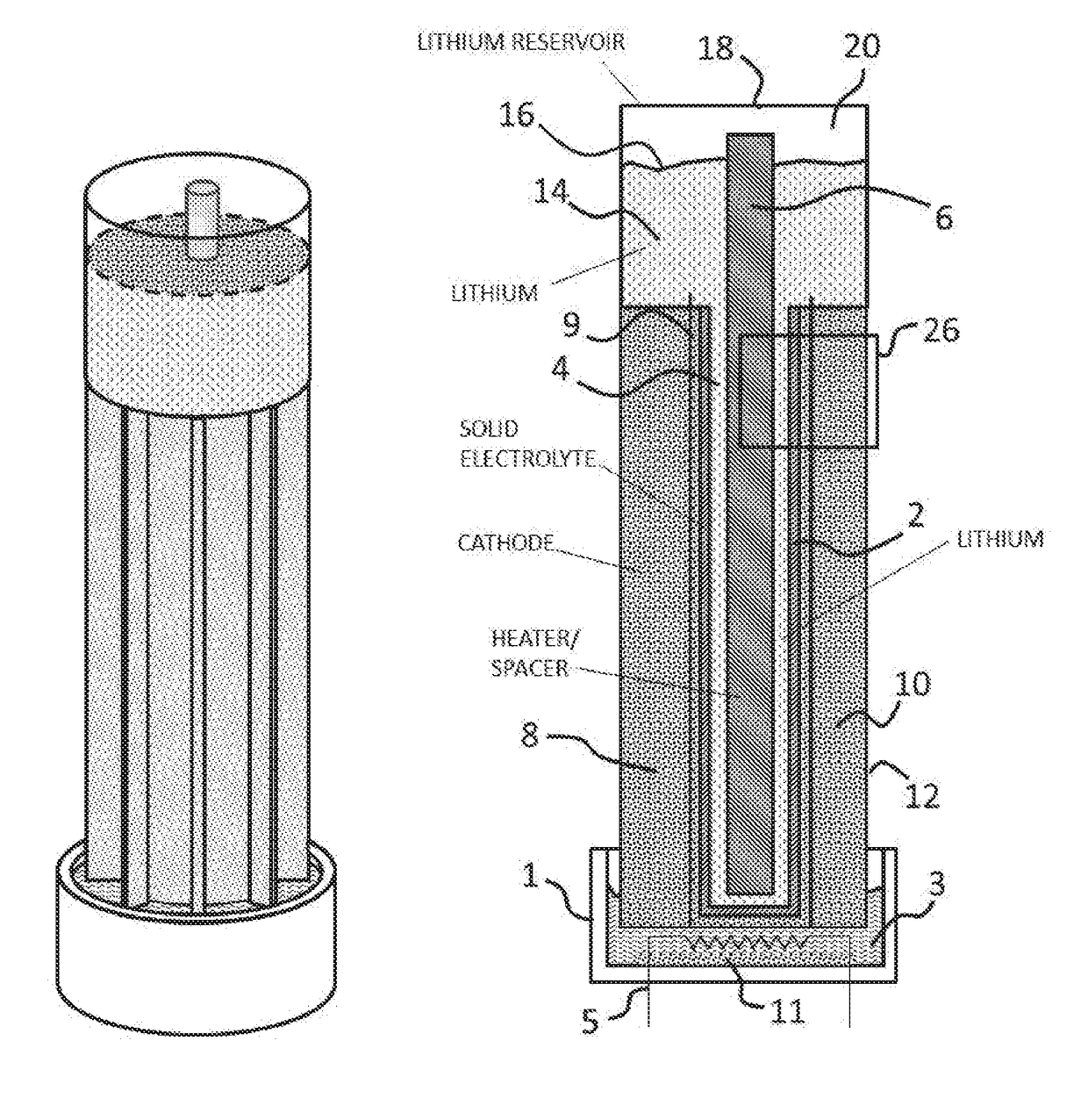Johnson lithium oxygen electrochemical engine
a lithium oxygen electrochemical engine and lithium oxygen technology, applied in the direction of electrolyte stream management, cell components, cell component details, etc., can solve the problems of aqueous lithium air batteries that suffer from corrosion, less than optimum capacity, and limited specific energy of conventional li-ion batteries
- Summary
- Abstract
- Description
- Claims
- Application Information
AI Technical Summary
Benefits of technology
Problems solved by technology
Method used
Image
Examples
Embodiment Construction
[0029]This invention relates generally to energy storage, and more particularly to a lithium air electrochemical cell. For the purposes of this disclosure, the terms lithium air cell, lithium air electrochemical engine and lithium oxygen battery are used interchangeably.
[0030]The present invention provides a rechargeable lithium air cell having a high rate of cell charge / discharge with limited capacity fade, high energy density, high power density, and the ability to operate on oxygen from ambient air. As such, it removes significant barriers that have prevented the commercialization of lithium air cells. For example, the formation of mossy lithium powder and dendrites at the anode-electrolyte interface during cell recharge are eliminated by the use of molten lithium supplied as a flow reactant to the anode side of a stable solid state ceramic electrolyte. The battery according to the invention also includes a flow system for removing reaction product from the cathode.
[0031]The reac...
PUM
| Property | Measurement | Unit |
|---|---|---|
| temperature | aaaaa | aaaaa |
| operating temperature | aaaaa | aaaaa |
| operating voltage | aaaaa | aaaaa |
Abstract
Description
Claims
Application Information
 Login to View More
Login to View More - R&D
- Intellectual Property
- Life Sciences
- Materials
- Tech Scout
- Unparalleled Data Quality
- Higher Quality Content
- 60% Fewer Hallucinations
Browse by: Latest US Patents, China's latest patents, Technical Efficacy Thesaurus, Application Domain, Technology Topic, Popular Technical Reports.
© 2025 PatSnap. All rights reserved.Legal|Privacy policy|Modern Slavery Act Transparency Statement|Sitemap|About US| Contact US: help@patsnap.com



